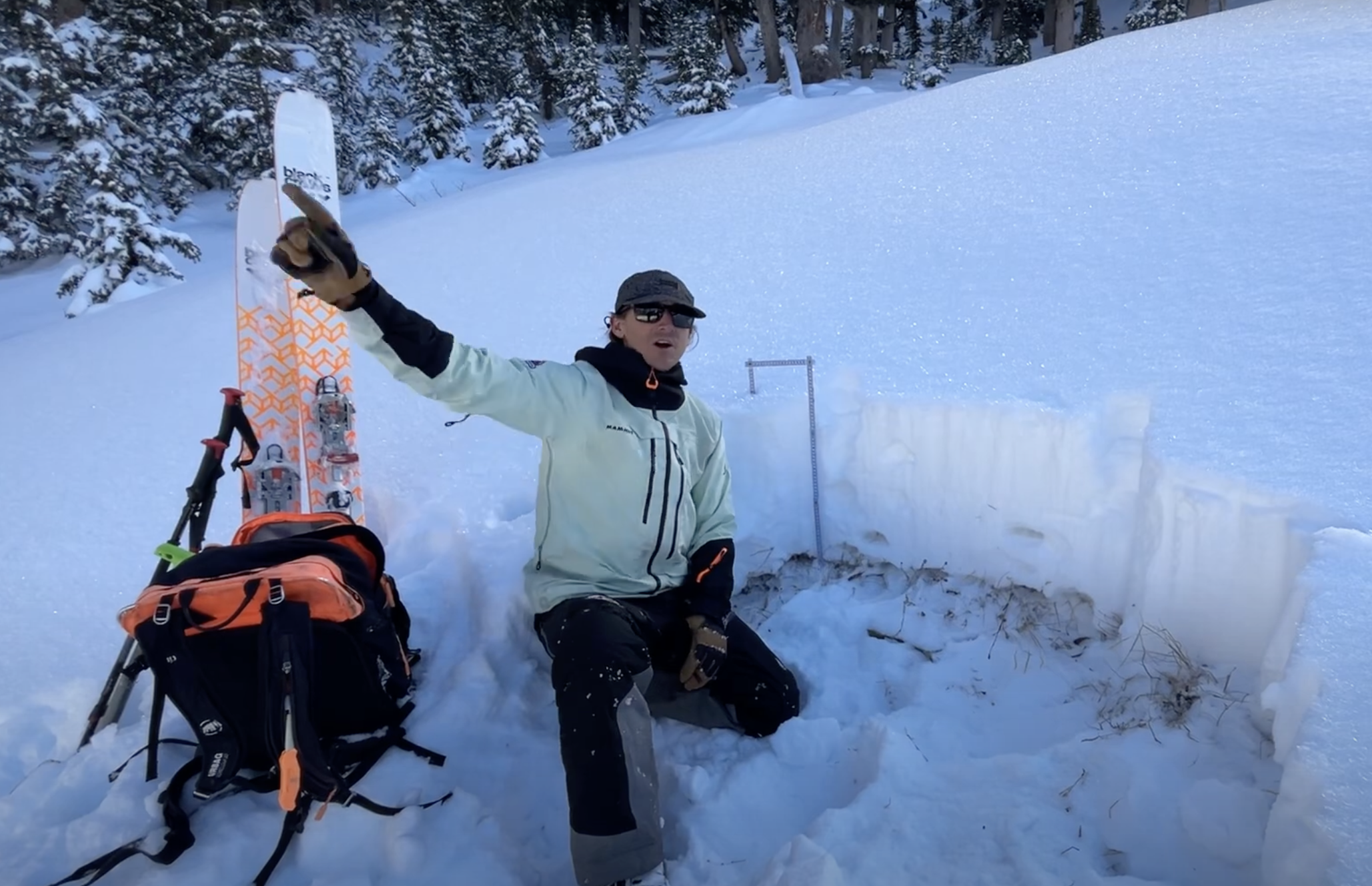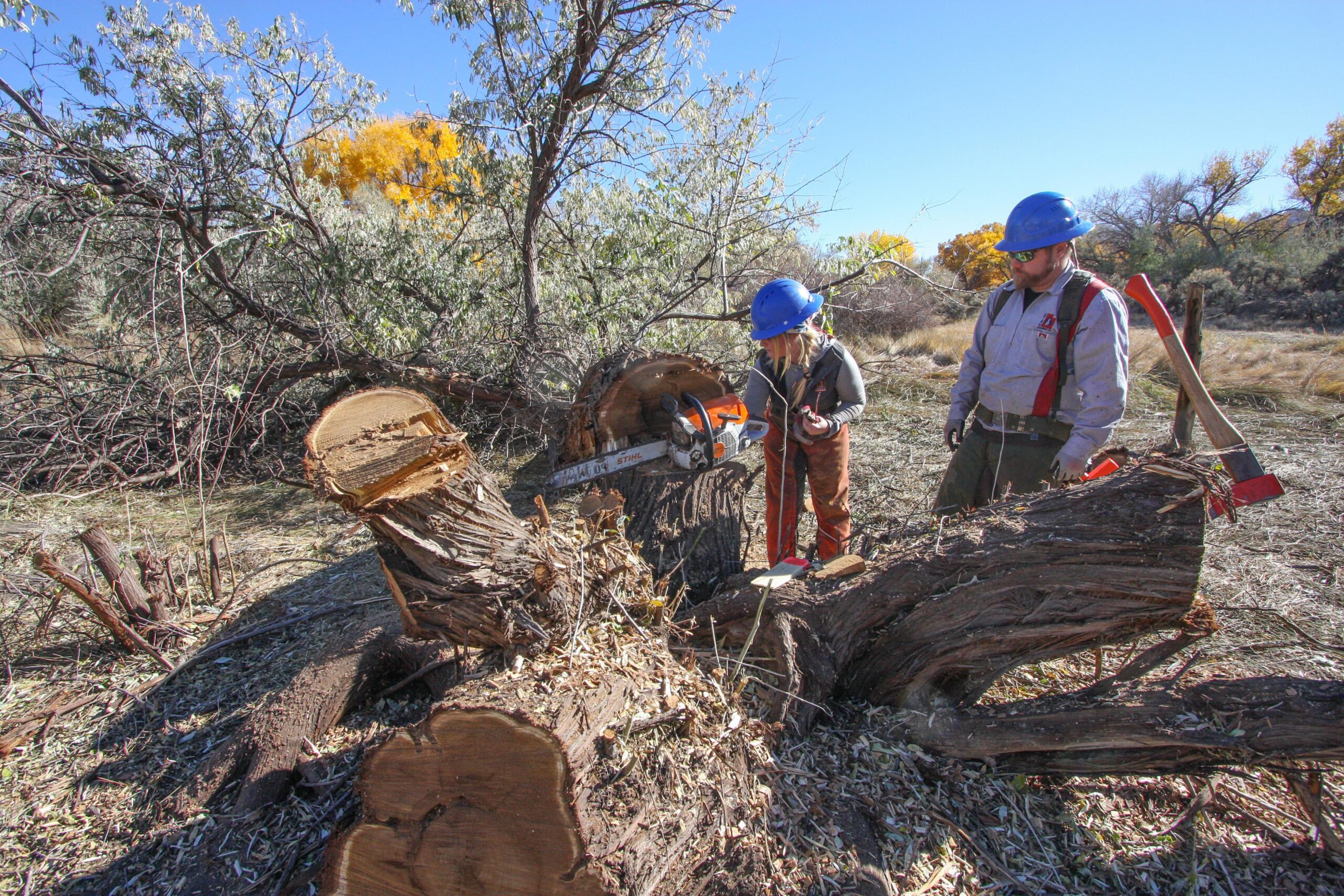Some information may be outdated.
A series of thunderstorms wreaked havoc on the Moab Valley this weekend as flash floods cut through town, eroding creek banks and damaging infrastructure that had been repaired after previous storms, leaving some locals wondering if what was referred to as a “100-year flood” could be a new normal, potentially impacting city infrastructure and mitigation plans.
The flood left debris, sediment buildup, property and infrastructure damage, and residential irritation for city crews and authorities to work through this week. Flash floods that peaked at 6600 cubic feet per second breached the nearly century-old power dam at the top of Mill Creek’s drainage.
Residents and businesses are encouraged to report property damage to the city to ensure effective cleanup coordination (the survey: https://arcg.is/1Svf9), said Lisa Church, Moab City communication manager. The City of Moab is also offering free sandbags and Canyonlands Solid Waste Authority will accept debris free of charge through August 31.
As part of ongoing coverage of the issues, this week, the Moab Sun News reached out to local elected officials, experts and residents to report on efforts to mitigate future floods and how property owners can protect themselves in the meantime.
Preparing for future events
“Flood mitigation was not a priority in April when we passed the 24-25 budget,” said Mayor Joette Langianese in a conversation with the Moab Sun News on Tuesday, as a comparable flood in 2021 raised less alarm. “Now, with multiple events in one season, it is apparent flood mitigation is a top priority.”
The Moab City Council met with Mayor Langianese and Moab City Manager David Everitt on Tuesday evening to workshop capital asset planning, particularly capital improvement projects that would alter the city infrastructure’s capacity to handle the new normal, rather than simply repair or maintain current infrastructure.
Reprioritized projects include several bridges (particularly the 300 S. bridge over Mill Creek) which overtopped, flooding residences and businesses.
“We are focused on projects that will make a significant difference when these floods do happen,” Everitt said, “and are working with federal agencies and our representatives in Congress to seek the support and funding needed to accomplish this work.”
“When we’re dealing with waterways, the process for evaluation and project approval is complex,” said Everitt in a statement.
At the meeting, Councilmember Kaitlin Myers observed that engineers often require more than three years of abnormal data to plan and execute effective capital projects to ensure that these expensive improvements are truly necessary.
Because the City’s budget fiscal year begins in July, property tax funding for such projects won’t be approved until halfway through 2025, leaving Langianese on the hunt for alternative funding in the meantime.
“There are so many pots of money,” said Langianese, referring to FEMA funds, federal infrastructure funding, bonding packages, municipal sources, and other state or federal grants.
“I already talked to Senator Romney’s team, Congressman Curtis, and Senator Kennedy, and all of them are ready to support us,” she said, mentioning that elected officials said that Moab’s international draw of tourists would motivate their financial support.
Mayor Langianese estimated Moab won’t see large-scale capital improvements for at least another three years, at a price tag projected to be in the tens of millions of dollars.
Only one citizen spoke on the topic at Tuesday’s council meeting, Katherine Holyoak. Her message to the council: “It’s in your hands now.”
A real-time warning system for residents is also in the works, said Grand County Emergency Management Director Cora Phillips. All residents are encouraged to sign up for the area alert system at www.grandcountyalerts.org, and Philips is working with the Utah Division of Emergency Management to improve the public announcement system to get information to residents even more quickly and with more detail.
What can residents can do?
While public leaders work to update and improve infrastructure, citizens can prepare for flood events through effective landscaping, permaculture techniques, and neighborhood coalitions.
“The first thing people need to understand is their context, and you don’t necessarily have to be an expert,” said Jeff Adams, a permaculture-based landscaper who owns Terrasophia, a local landscape contracting firm.
“Are you dealing with Mill Creek Drainage, side drainage from the rim, upgradient neighbors? And what’s the scale of the sediment or erosion coming onto your property? These questions will inform your best options.”
Adams advised Arroyo Crossing resident Maggie Gruszka to temporarily divert water using leftover straw bales from her Community Rebuilds project. A stream flooded her yard and nearly reached her home, despite the success of culverts installed under Arroyo Crossing.
Maggie Gruszka uses straw bales to divert future floods at Arroyo Crossing. photo by nath kapoor
“Although the approach likely changes in the immediate floodplain with higher and stronger water flows, there is a catch-all when it comes to managing heavy rainfall on our properties,” said Dr. Roslynn McCann, USU professor and Sustainable Communities extension specialist.
Her advice for decreasing the flow of floodwater through properties and into creeks is creating “water-harvesting earthworks” to slow water flows and allow rainwater to sink into soils, such as indented basins.
“These basins, if designed well, can direct water away from the household and feed perennial plants which have larger root systems to better stabilize our soil,” Dr. McCann said. “As a general rule, in the desert, plants should be [placed] low and wetter, pathways should be higher and dryer.”
Dr. McCann pointed to evidence from a study of ‘green’ infrastructure in Tucson, Arizona by the Watershed Management Group which found that such earthworks significantly diminished localized flooding, even when only 10% of residents installed the features. The study found that slowing flood waters in front yards was a “comparatively inexpensive approach.”
While the city pursues large-scale infrastructure solutions, the study shows the effectiveness of working with neighbors towards a common goal, which Adams also emphasized.
“A lot of this stuff should be dealt with at the neighborhood scale,” said Adams. “One property impacts the next property because water needs somewhere to flow.”
Both Adams and Dr. McCann also spoke of the benefits of collecting rainwater during extreme monsoon events via rainwater catchment systems, which Utah citizens can legally adopt.
“In permaculture, there is a common saying of ‘the problem is the solution,’” said Dr. McCann. “Especially in a changing climate, when it rains in the desert, we should all have landscapes designed to maximize the potential benefits of that resource.”
One local builder the Moab Sun News spoke to had even simpler advice: “If you’re building a house, get it up as high as you can,” said SET civil engineer and Moab local Aaron Holland. “I have never seen the type of flows we’ve been getting.”
This is a developing story that you can be a part of. Share your stories about property damage, landscaping techniques, and advice for property owners by emailing our reporter: kapoornathk@gmail.com
View from above the power dam shows tree debris, yellow tape, and water flowing through (rather than over) the dam. photo by nath kapoor
Appreciate the coverage? Help keep local news alive.
Chip in to support the Moab Sun News.





